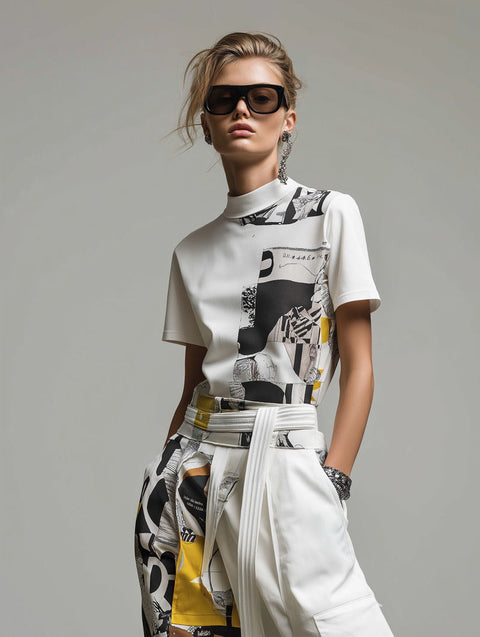
Recycling Fabric Scraps – Each Small Piece Weaves a Green Future
Recycling fabric scraps is a creative solution in sustainable fashion, helping to turn forgotten leftovers into new values that are aesthetically pleasing and environmentally responsible.
Why Are Fabric Scraps Becoming a “Burder” for the Fashion Industry?
1. Every Piece of Fabric Has an Invisible Cost
Did you know that on average, 10-20% of a garment is discarded during the cutting and sewing process? Fabric scraps – no matter how small – require the same amount of water, dye, and energy as the main fabric. When discarded, they are not only a waste, but also part of the 92 million tons of fashion waste produced each year (according to a report by the Ellen MacArthur Foundation).
Most textile scraps don’t decompose quickly because they contain synthetic fibers or blends of materials. When they end up in landfills, they take decades to break down – all the while leaching microplastics and chemicals into the soil and water.

2. Scraps Are Not Useless – The Question Is Whether We Know How To Reuse Them Or Not
From broom liners and dishcloths to industrial rugs and patchwork blankets, fabric scraps have long been used in small workshops and households. However, on a large scale and with high aesthetic appeal, recycling fabric scraps requires design thinking and technology – something the fashion industry is beginning to focus on.

What is Scrap Fabric Recycling? Current Forms of Recycling
1. Mechanical Recycling – Turning Fabric Scraps into New Fibers
This is the most common method. Scraps are sorted by color and material, then chopped, fluffed into coarse fibers, and then spun into new fibers to weave the fabric. This method has the advantage of using less water, but the disadvantage is that the fibers are often less durable, so it is often used in casual or homewear product lines.
2. Upcycling – Recycling with Design
Unlike technical recycling, upcycling is a method of “upgrading” fabric waste into products of high aesthetic value : patchwork bags, pieced denim shirts, handmade accessories or artistic fashion lines. This is a form that requires a lot of effort but brings great cultural and personal value.

3. Industrial Recycling – Combined With Plastic, Rubber
Some fashion brands combine scraps of fabric with recycled plastic to create new materials for shoe soles, bag linings or accessories. This is an industrialized approach, suitable for large businesses with closed supply chains.
Recycling Fabric Scraps Is Not Just a Trend, It's a Statement of Responsibility
Recycling is not just the responsibility of manufacturers. When you sort your old clothes, send them to a waste collection point, choose to buy products made from recycled fabrics – you are actively contributing to reducing the burden on the environment. That is when fashion moves from consumption to resonance.
As a brand that pursues a sustainable philosophy, Root Rotation has introduced many designs using patchwork denim, recycled fabrics from waste products, combined with hand embroidery techniques to breathe new life into old materials. For them, every piece of leftover fabric is a creative opportunity.

Related articles:
Where do natural fibers come from? Why are they increasingly popular?
The weaving shuttle and the symbolic story of craftsmanship
Dressing Style – The Journey to Finding Your Own Stylish Version

